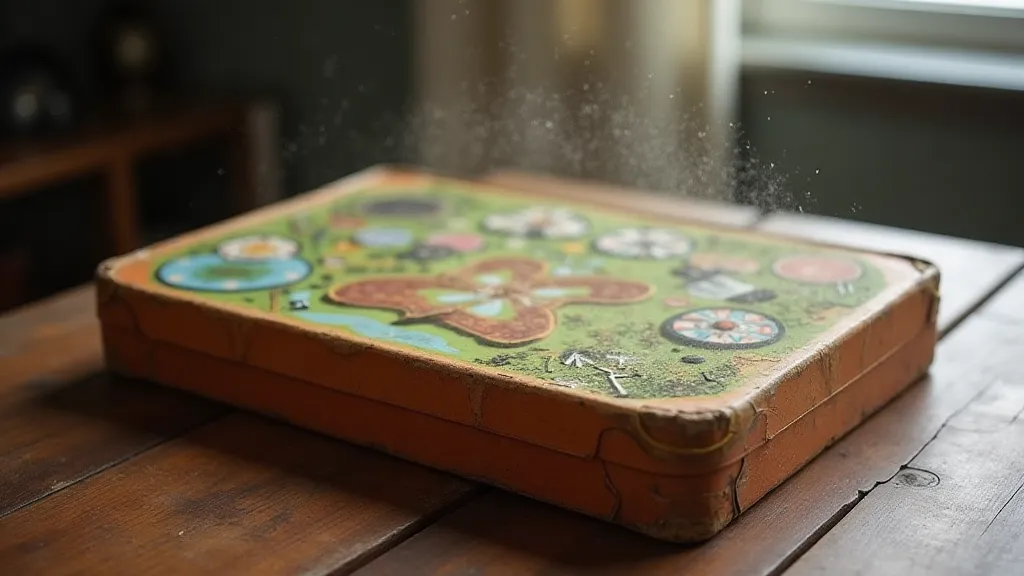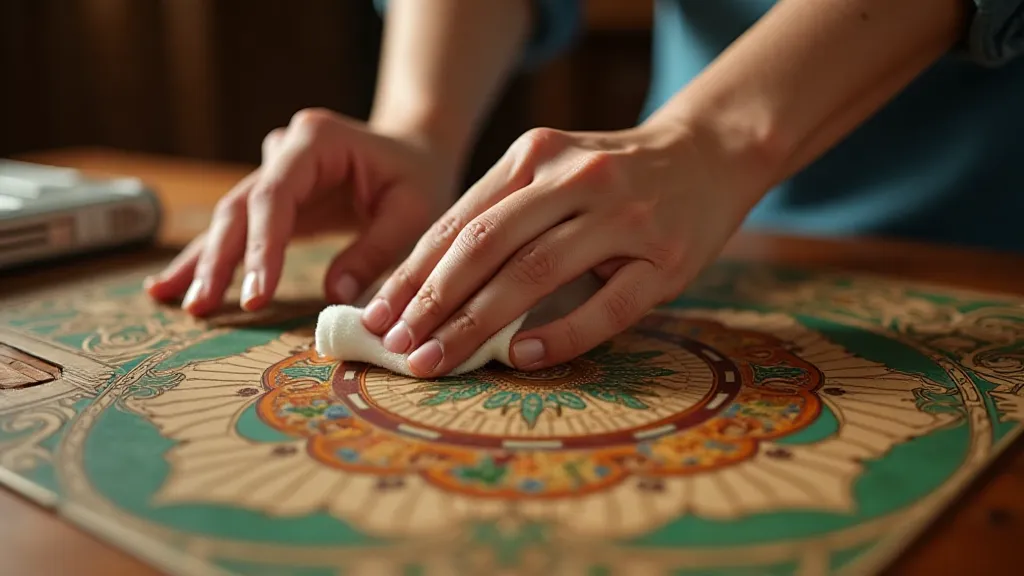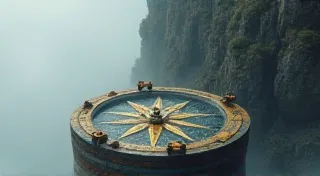The Cartographer's Compass: Navigating the Shifting Sands of Game Design Trends
There's a certain melancholy that clings to forgotten board games, a whisper of laughter and strategy silenced by changing tastes and evolving technologies. It’s akin to discovering an antique accordion, its bellows collapsed, its keys yellowed with age, yet still possessing the potential to conjure a vibrant, emotional waltz. These instruments, like these games, were once vital parts of a cultural landscape, reflecting and shaping the times in which they existed. To understand their decline isn't simply a matter of cataloging outdated mechanics; it's about tracing the shifting sands of game design trends, and recognizing how these vintage titles foreshadowed or reacted to broader artistic and cultural movements. It’s a journey that speaks to more than just game design; it’s a narrative woven into the broader history of cultural shifts and the human need for both challenge and connection.

The Dawn of Strategic Depth: From Moral Instruction to Exploration
Early board games, many dating back to the 18th and 19th centuries, weren't born from a desire for pure entertainment. They served a dual purpose: moral instruction and educational enrichment. Games like “The Mansion of Happiness” (1843), a popular precursor to Monopoly, were essentially morality trails, rewarding virtuous behavior and penalizing vice. The mechanics were simple, the narrative didactic, and the focus squarely on shaping young minds. This reflected the era's emphasis on societal order and the responsibility of the older generation to instill proper values. The craftsmanship involved in creating these games, from the intricate wooden components to the hand-painted boards, often reflects the values of the time – a connection worth exploring further, much like the legacy of the artisans who carved the very game pieces themselves.
As the 19th century progressed, a desire for adventure and exploration began to permeate popular culture. The Age of Discovery had left its mark, and games started to mirror that spirit. Titles like “Touring Through the World” (1881) offered a vicarious journey around the globe, employing a combination of dice rolls and geographical knowledge. These games represented more than just a diversion; they offered a fleeting taste of the grand narratives unfolding beyond one’s doorstep, fuelled by the burgeoning travel industry and a romanticized view of the unknown. The act of documenting those journeys and transforming them into playable experiences demonstrates a fascinating blend of storytelling and emerging cartography—a practice that, in itself, charted both physical and cultural landscapes.
The Rise of Abstract Strategy and the Modernist Impulse
The early 20th century witnessed a significant shift. The devastation of World War I profoundly impacted societal perspectives, leading to a rejection of traditional narratives and a fascination with abstraction. This resonated in the art world with movements like Cubism and Surrealism, and it found an interesting parallel in game design. The rise of abstract strategy games like “Hex” (1928) and, later, “Game of Life” (1960) – while ostensibly simple – moved away from explicit narratives and focused on pure strategic challenge. The “Game of Life,” in particular, reflects a subtle cynicism about the predictability of life, offering a humorous, albeit detached, examination of milestones and choices. The narrative thread, though thin, still carries echoes of the broader artistic and cultural explorations happening at the time—a subtle rebellion against the overtly didactic nature of earlier games.
This move toward abstraction wasn’t simply about creating a more challenging experience. It mirrored a broader cultural desire to dissect experience, to understand the underlying structures that govern our lives. The elegant, minimalist design of these games felt less like a children's toy and more like a philosophical puzzle – a challenge to the player’s intellect rather than a voyage of discovery. The appeal of charting a course through uncertainty, much like charting a course across an uncharted sea, spurred innovation across numerous disciplines—a concept that resonates even today.
The Era of Thematic Immersion: Storytelling Takes Center Stage
The mid-to-late 20th century saw a return to thematic games, albeit with a new level of sophistication. While Victorian-era games often utilized thematic elements as a vehicle for moral lessons, post-World War II games sought immersive storytelling experiences. Titles like “Dark Tower” (1981), with its elaborate three-dimensional components and fantasy setting, represented a significant leap in complexity and thematic depth. The game aimed to be more than just a game; it wanted to be a portal to another world. This ambition to craft entire universes within the confines of a game board speaks volumes about the evolving relationship between entertainment and escapism.
This focus on thematic immersion was fueled by the growing popularity of fantasy literature and role-playing games. Games like "Dungeons & Dragons," which revolutionized tabletop gaming, demonstrated the power of shared storytelling and character development. Board game designers began to take note, striving to replicate that same level of engagement within a more structured format. The ability to shape narratives and inhabit different personas found a fertile ground in the growing appreciation for both fantasy and self-discovery—reflecting a broader cultural desire for agency and exploration. The narratives themselves, often complex and layered, showcase the sophisticated storytelling techniques emerging from literature and film, influencing how players experience these games.

The Cycle of Innovation and Nostalgia: A Recurring Pattern
As game design trends evolve, a fascinating pattern emerges: innovation often leads to complexity, which can then lead to a sense of fatigue, prompting a nostalgic yearning for simpler times. The elaborate rulebooks and intricate components of many modern games can be daunting, leading some players to seek refuge in the elegance of vintage titles. This isn't a simple case of “the good old days”; it’s a cyclical phenomenon driven by the human desire for both novelty and comfort. The lure of a simpler era, a time when games were less about overwhelming complexity and more about shared moments of joy, pulls at the heartstrings of many. Often, the intricate designs of these older games reflect a dedication to craft and artistry – a stark contrast to the sometimes mass-produced nature of modern games.
Moreover, the craftsmanship evident in many vintage games is something increasingly valued in a world dominated by mass production. The attention to detail, the quality of materials, and the hand-painted artwork – all hallmarks of a bygone era – evoke a sense of warmth and authenticity that is often lacking in contemporary games. Restoring a vintage board game, carefully cleaning the components, and repairing any damage isn't just about preserving a piece of history; it’s about connecting with the passion and artistry of the original creators. This appreciation extends beyond the games themselves; it highlights a broader desire for authenticity and a yearning for objects made with care and intention – a concept explored with great detail in The Stone Mason’s Legacy: Etching the History of Board Game Components, examining the artistry inherent in their creation.
Preserving the Legacy: Collecting and Restoration
Collecting and restoring vintage board games is more than just a hobby; it's a form of cultural preservation. Many of these games hold a unique place in our social history, offering a window into the values, aspirations, and anxieties of previous generations. The process of restoration – carefully cleaning components, repairing damaged boards, and preserving original artwork – can be immensely rewarding, fostering a deeper appreciation for the craftsmanship and ingenuity of the original designers. The stories woven into these games are often more than meets the eye; they offer glimpses into the social and cultural landscape of their time—much like the subtle threads of narrative found within the games themselves are analyzed in The Dream Weaver’s Loom: How Narrative Threads Unravel in Forgotten Games.
For those interested in delving into this fascinating world, there are numerous online resources and communities dedicated to vintage board games. Learning about the history of a particular title, researching its original packaging and components, and connecting with fellow collectors can enrich the experience and provide valuable insights into the evolution of game design. Each vintage game tells a story, waiting to be rediscovered and shared with a new generation of players, reminding us that the enduring appeal of tabletop gaming lies not just in the mechanics, but in the human connection they foster. The challenges of navigating these games and the landscapes they represent also share an intriguing parallel with the historical endeavor of charting unknown territories—a concept explored in more detail in The Cartographer's Lament: How Uncharted Territories Define Board Game Innovation.

The Future of Preservation: Digital Archives and Community Engagement
Looking forward, the preservation of vintage board games extends beyond individual restoration efforts. Digital archives are becoming increasingly vital, allowing for the documentation and sharing of game components, rules, and historical context. Online communities dedicated to these games are also flourishing, providing platforms for collectors to connect, share knowledge, and collaborate on restoration projects. The creation of virtual museums and interactive exhibitions can further enhance accessibility and engagement, ensuring that these cultural treasures are enjoyed by generations to come. It’s a collaborative effort—a fusion of individual passion and collective responsibility—to safeguard the legacy of tabletop gaming.
Furthermore, the future of game design itself may draw inspiration from these vintage titles. A renewed appreciation for simplicity, elegance, and handcrafted quality could lead to a resurgence of board games that prioritize player experience over sheer complexity. Hybrid approaches – combining classic mechanics with modern design sensibilities – hold great potential for creating engaging and accessible games that appeal to a wide range of players. The cyclical nature of innovation suggests that the best games of the future may well be those that learn from the past, embracing the enduring power of play and the art of storytelling.
Ultimately, the story of vintage board games is a microcosm of the broader human experience—a testament to our capacity for creativity, our desire for connection, and our enduring love of play. By preserving these cultural artifacts, we not only honor the ingenuity of past generations but also enrich our own lives and inspire future generations to embrace the timeless joy of tabletop gaming.





